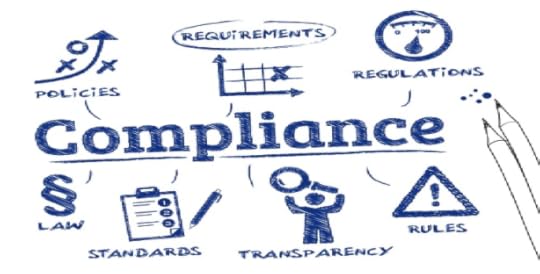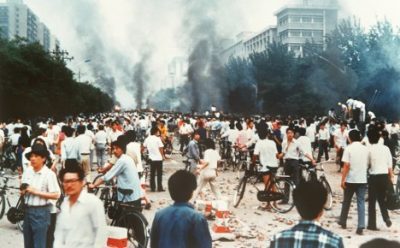Stuart Jeanne Bramhall's Blog: The Most Revolutionary Act , page 1182
May 20, 2017
Is Trump’s Trip Green Light for UAE Blackwater-Led Mercenary army To Attack Iran?
*
*
Update on notorious Blackwater founder Erik Prince, who has moved to the United Arab Emirate due to mounting legal problems in the US. Apparently the crown prince of Abu Dhabi has hired him to put together a mercenary army – presumably to attack Iran.
Hezbollah Slams Western/Israeli Plot To Export Sunni Terrorism
Most World Terrorism Is By Sunni Terrorists, 4 Years Running
Sunni Terrorism is Killing Internationally but America Blames Iran: Christians and Hezbollah
Washington In Bed With Countless Sunni Terrorist Outfits In Insane Crusade To Dominate the World
[SAUDI/SUNNI SUPERSTATE…how it all began—
THE LOCATION CHOSEN FOR THIS SUNNI SUPERSTATE IS THE SAME SITE CHOSEN BY ISIS FOR THEIR DESERT “CALIPHATE”.]
 Sheik Mohamed bin Zayed al-Nahyan of Abu Dhabi hired Erik Prince to build a fighting force.
Credit Doug Mills/The New York Times
Sheik Mohamed bin Zayed al-Nahyan of Abu Dhabi hired Erik Prince to build a fighting force.
Credit Doug Mills/The New York Times
The Gulf is raising a bigger army. But for what?–May 25, 2011
“The Colombians had entered the United Arab Emirates posing as construction workers. In fact, they were soldiers for a secret American-led mercenary army being built by Erik Prince, the billionaire founder of Blackwater Worldwide, with $529 million from the oil-soaked sheikdom. Mr. Prince, who…
View original post 1,830 more words


Understanding the Current Economic Crisis
The ABC’s of the Economic Crisis: What Working People Need to Know
Fred Magdoff and Michael Yates
Monthly Review Press (2009)
Book Review
In the ABC’s of the Economic Crisis, Magdoff and Yates use stagnation theory to explain the origins of the current global economic crisis. Karl Marx predicted that overproduction and stagnation would be inevitable under monopoly capitalism once market demand has been saturated. Magdoff and Yates use the auto industry as an example. Immediately after World War II, consumers bought a lot of cars and trucks which were unavailable between 1941 and 1945. By 1970 there was a surplus of cars – all the Americans who wanted cars and trucks had already bought them. Meanwhile the world’s poorer nations didn’t have a mass market large enough to reduce this surplus.
The same was true of other durable goods (refrigerators, washing machines, dishwashers, vaccuum cleaners, etc). And as consumer buying slowed, so did profits and GDP growth.
Why Capitalism Didn’t End With the Great Depression
Many Marxists (including John Strachey in The Coming Struggle for Power) believed the Great Depression signaled end stage stagnation and the imminent death of capitalism. According to Magdoff and Yates, it was only the massive economic boost of World War II military spending that saved capitalism in the thirties and forties.
There was also a brief post war boom in the fifties and sixties, as consumers rushed to buy goods that were unavailable during the war. When the sixties ended, stagnation set in again, accompanied by a marked slowing of profits and growth. However neither declined to 1930s levels, thanks to the “financialization” of the US economy.
The Financialization of the US Economy
The term “financialization” describes the process of creating profits without producing products or services. In the US, finanancialization injected money into the economy in three ways: via massive government spending and indebtedness (to private banks), via massive consumer indebtedness and via an explosion in the trade of derivatives and similar financial products.
Between 1980 and the 2008 crash, the banking, insurance and investment sector became the largest growth sector of the US economy. Beyond financing unprecedented levels of consumer, business and government debt, this sector also engaged massively in speculation (ie gambling).
Financialization: A Giant Ponzi Scheme
As Magdoff and Yates describe, the enormous “wealth” created by the financial sector helps to drive the “real” productive economy. The main problem with financialization is that it’s basically a Ponzi scheme – it can continue only so long as economic growth continues. If it goes on too long, the speculative bubble will burst, resulting in financial collapse, as it did in 1929 and 2008.
The Link Between Declining Profits and Low Wages
Despite the life support provided by “financialization,” economic stagnation continued between 1970 and 2008. As Magdoff and Yates point out, GDP growth dropped from 4.4 to 3.3 percent in the 1970s, to 3.1 percent in the eighties and nineties, and 2.2 percent between 2000 and 2008.
A significant decline in wages and purchasing power accompanied this decline in profits and growth. In order to keep workers consuming, the corporate sector compensated by giving them credit cards – lending them money at 18-20% interest they were no longer paying in wages.


May 19, 2017
Turning to Hemp to Rejuvenate Kentucky Economy
Story and photos by Hannah McCarthy
Just 2 miles outside of downtown Cave City, Kentucky, the landscape quickly turns from old brick and mortar to farmhouses and dirt roads. Down one such dirt road, a 45-acre plot of land rests nestled between patches of trees, large stretches of wildflowers and tall grasses. Two 2012 Clayton model mobile homes, an old red barn and a spattering of newer-looking structures dot the immense sea of green grass.
The dirt road leads to a gravel pathway almost up to the door of the main house. This is the new home and farm of the Wilson family, one of Kentucky’s first families to enter into the world of hemp farming through the Industrial Hemp Research Pilot Program.
Inside, two men, the heads of the two households, scurry around in the small kitchen of the main home. Dodging the kitchen island, the dog and each other, they are busy making phone calls to clients and searching for a product or a tool or a piece of paper. There is much to be done on this April day, as the summer is quickly approaching.
One of them is a burly bearded man in a farmer’s plaid button down. The hat he wears reads “Green Remedy,” and it is adorned with buttons and pins with pro-hemp sayings, phrases and images. Tufts of curly gray and black hair stick out from beneath the hat, and a salt-and-pepper goatee wraps around his bright smile.
This is Chad Wilson, sometimes better known as the Hemp Preacher.
He doesn’t remember when he first got the name or even who gave it to him; all he knows is that it has caught on over the years.
“I can get up on a soapbox pretty quick,” he laughs. “Thing is I get to speakin’ and it just turns to preachin’.”
Chad knows he is not the only one out there who preaches the power of hemp as a versatile and strong plant. He believes in its abilities to rejuvenate Kentucky farms and the agriculture industry across the nation.
As for his nickname, Chad does not want to end up as the face of Kentucky hemp, although he slowly starting to gain that reputation. He said his biggest goal is to spread the word about the industry and to help it grow with or without his name.
This year, Chad and his family are taking their involvement in the industry one step further. They will be planting and growing their own hemp in order to have a hand in every aspect of the production.
“We’re trying to get into a position where we help others, and we feel like it’s our calling; by doing that we help grow the industry.”
Hemp History and the IHRPP
Hemp has been planted on American soil since the Colonial Era. According to the Kentucky Department of Agriculture, Kentucky planted its first crop in 1775, and the state would become the leader in hemp production for years to come. In 1850, hemp production was at its peak with 40,000 tons of the crop coming out of Kentucky’s soil. However, in 1938 all forms of cannabis, including hemp, were outlawed, and so began its disappearance from the American farm.
During World War II, a small resurgence occurred in the industry, as hemp was used to make rope and materials for the war effort. Once the war ended, the crops began to dwindle and died out completely by 1958.
The “Second Prohibition,” as it is called by some hemp enthusiasts, occurred in 1970, when the Controlled Substances Act was passed, declaring Marijuana a “Schedule 1 substance.” Although hemp is also from the cannabis plant, it is grown and cultivated differently than marijuana. However, much of the legislation passed in the 19th and 20th centuries lumped both plants together without exception.
While marijuana is grown in a wider, spread out area, hemp farmers hope that stalks will grow up rather than out. Marijuana is also grown and harvested for its THC content. Hemp is cultivated for its seed and fiber. It has been used to make lotions, clothing and hair care products, but until recently it has been a U.S. import.
The 2014 U.S. farm bill allowed certain states to test hemp farm pilot programs. Kentucky was one of the first states to adopt the Industrial Hemp Research Pilot Program, and from its installation has seen the acreage of crops planted go from zero to 2,300 acres in just under 3 years. The Kentucky Department of Agriculture hopes to see continued growth in the industry as the 2017 season begins around late May. However, many local farmers still worry about the risks of industrial hemp farming. . .
Source: Hope for Hemp: Cave City family sees future in new crop


Pence Begins Presidential Campaign Unofficially
*
*
Do we really want this man at President? The liberals baying for Trump’s impeachment need to think long and hard about what they’re doing. For one thing, TPP will be back on the table the day after Pence gets in.
On Wednesday, May 17th, U.S. Vice President Mike Pence, who has built his political career as both a fundamentalist Christian, and a client of the libertarian Koch brothers’ extensive fundraising network, made his unofficial but starting bid to become the U.S. President: he formed an organization to raise funds from billionaires and centi-millionaires, in order for Pence to be able to distribute those wealthy investors’ funds to Republican politicians (especially to ones in the U.S. Senate and House) whom Pence favors, and who might reasonably then be expected to return that favor by their supporting a Pence bid to become the U.S. President. Of course, the Presidency is the only American political office that’s higher than Pence’s current one, the Vice Presidency.
This type of organization is called a “leadership PAC,” and the donors to it are thereby entrusting to the politician who has formed it, that politician’s ability and…
View original post 1,555 more words


Only Total Non-Compliance Can Achieve Freedom – How to Build Communities
*
*
Historical fact: if too many people regularly break the law, police won’t enforce it.

Source – themindunleashed.com
– “…The state is often an airtight, all powerful crushing force: this is especially apparent if you look at sanctions, borders, taxes, and things of that nature. However, deep in the crevices of a country, where the authorities don’t find it practical to enforce a law, there exists an opportunity to turn the “law” on its head”:
‘Only Total Non-Compliance Can Achieve Freedom’, How to Build Communities
From my perspective, the last few years have been pretty bleak for activists, the alt media, and people who care about a future. People want to be free, and the overwhelming force of the state is not about to let people just exit the system and be free. It makes people feel hopeless.
Mark Passio expressed the feelings of many activists well in this video: a lot of us are getting cynical, wanting to do something truly meaningful and effective
View original post 1,128 more words


May 18, 2017
Sweden Bans Mandatory Vaccinations Over ‘Serious Heath Concerns’
*
*
The Swedish Riksdag’s sensible decision flies in the face of what is happening in the United States and other western countries right now. Big Pharma has lawmakers in a choke hold, dictating policy and using the corrupt media to silence dissenters.
http://ift.tt/2rws5Sy Sweden has banned mandatory vaccinations, citing “serious health concerns” and the fact they violate a citizen’s constitutional rights to choose their own healthcare. The Swedish Riksdag (parliament) rejected seven motions on May 10 that would have enshrined forced vaccinations into law, stating “It would violate our [Swedish Constitution] if we introduced compulsory vaccinations, or mandatory vaccinations.” Noting also the “massive resistance (by Swedes) to all forms of coercion with regard to vaccinations“, the Riksdag also made reference to “frequent serious adverse reactions” in children who receive vaccinations. An English translation of the Swedish report: “NHF Sweden sent a letter to the Committee and explained that it would violate our Constitution if we introduced compulsory vaccinations,?
Sweden has banned mandatory vaccinations, citing “serious health concerns” and the fact they violate a citizen’s constitutional rights to choose their own healthcare. The Swedish Riksdag (parliament) rejected seven motions on May 10 that would have enshrined forced vaccinations into law, stating “It would violate our [Swedish Constitution] if we introduced compulsory vaccinations, or mandatory vaccinations.” Noting also the “massive resistance (by Swedes) to all forms of coercion with regard to vaccinations“, the Riksdag also made reference to “frequent serious adverse reactions” in children who receive vaccinations. An English translation of the Swedish report: “NHF Sweden sent a letter to the Committee and explained that it would violate our Constitution if we introduced compulsory vaccinations,?
Vía Red Ice News http://ift.tt/2qXfcE3


If China Can Fund infrastructure with Its Own Credit, So Can We
*
*
A key difference between China and the US is that the Chinese government owns the majority of its banks. Like private banks, state-owned banks simply create money as credit on their books. The difference is that they return their profits to the government (instead of Wall Street), making the loans interest-free. The US government could do this too, without raising taxes, slashing services, cutting pensions, or privatizing industries.
May 15th-19th has been designated “National Infrastructure Week” by the US Chambers of Commerce, the American Society of Civil Engineers (ASCE), and over 150 affiliates. Their message: “It’s time to rebuild.” Ever since ASCE began issuing its “National Infrastructure Report Card” in 1998, the nation has gotten a dismal grade of D or D+. In the meantime, the estimated cost of fixing its infrastructure has gone up from $1.3 trillion to $4.6 trillion.
While American politicians debate endlessly over how to finance the needed fixes and which ones to implement, the Chinese have managed to fund massive infrastructure projects all across their country, including 12,000 miles of high-speed rail built just in the last decade. How have they done it, and why can’t we?
View original post 1,830 more words


The Millionaires Who Supposedly Represent Us
My Ballot
Press TV (2016)
Film Review
My Ballot is a Press TV documentary examining which examines whether the millionaires who run Congress can ever represent ordinary Americans facing job loss, pay cuts and school closures. The choice of presenter, a guileless young African American named Robert Sughie, is brilliant. The best segment of the film shows him wandering around the halls of Congress, calling up the net worth of each representative on his Smartphone as he prepares to visit their office. Not a single congressional staffer agrees to speak to him – by phone or in person.
The documentary is chock full of shocking facts about the US Congress. Such as
More than half of congressional representatives are millionaires (It’s worse than the Roman senate).
In 2014, only 9% of Americans approved of Congress, a worse approval rating than King George enjoyed during the American Revolution.
Unlike most democracies, Congress isn’t election by majority rule, but by a simple plurality (ie one more vote than any other candidate). Because the US doesn’t hold run-off elections, representatives can be elected by as little as 30-40% of the vote.
From the day they take office, congressional representatives spend 75% of their time fundraising for their next campaign. A big reason why they allow corporate lobbyists to write legislation for them – they have no time to focus on developing policies of their own.


May 17, 2017
South Korea Ruling Party Mulling Return of THAAD System to US
*
*
In order to end the tension in the Korean Peninsula, the ruling Democratic Party of Moon Jae-in is scrapping the THAAD installation, which was rammed into the country during the last days of the US puppet regime of Park Geun-hye.
In order to end the tension in the Korean Peninsula, the ruling Democratic Party of Moon Jae-in is scrapping the THAAD installation, which was rammed into the country during the last days of the US puppet regime of Park Geun-hye.
View original post 279 more words


The Mythical Tiananmen Square “Massacre”
*
*
There are hundreds of thousands of hyperlinks to books, news, articles, and videos that describing the Tiananmen Square “massacre” – despite the fact that, in 1998, Washington Post journalist Jay Mathews confessed in the Columbia Journalism Review that “no one died at Tiananmen Square” and that “it is hard to find a journalist who has not contributed to the misimpression”.
By Wei Ling Chua
Global Research, May 17, 2017

When we search the internet for ‘Tiananmen Square Massacre’, there are hundreds of thousands of hyperlinks to books, news, articles, and videos that describe the event as a “Massacre”; and even the reputable Encyclopaedia Britannica also cites the Western media as sources to describe the 1989 incident as a “Massacre”.
This is despite the fact that, in 1998, Washington Post journalist Jay Mathews confessed in the Columbia Journalism Review that “no one died at Tiananmen Square” and that “it is hard to find a journalist who has not contributed to the misimpression”.
In 2004, the Christian Science Monitor revealed that Human Rights Watch decided not to publish their 52-page eye-witness report that confirmed the Chinese side of the story. In 2009, BBC journalist James Miles admitted that he had “conveyed the wrong impression.” CBS journalist, Richard Roth also confessed in 2009…
View original post 660 more words


The Most Revolutionary Act
- Stuart Jeanne Bramhall's profile
- 11 followers











